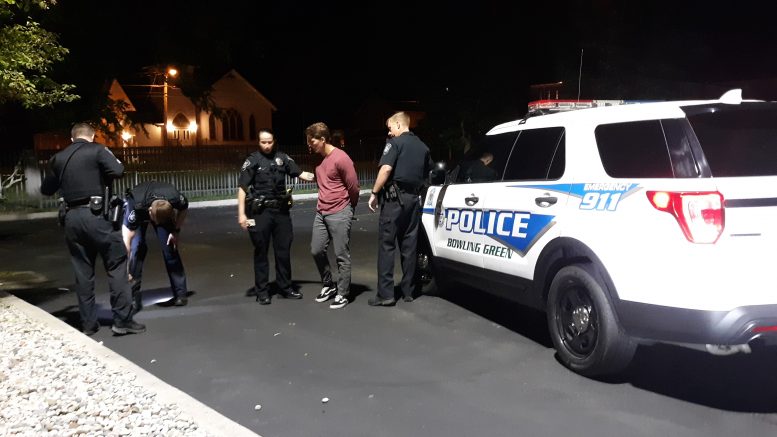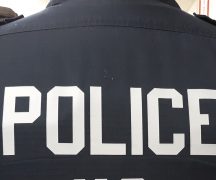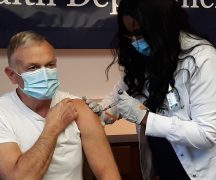By JAN LARSON McLAUGHLIN
BG Independent News
The brutal killing of another Black man at the hands of law enforcement last month has long tentacles touching communities like Bowling Green’s civil rights advocates, police and fire divisions.
The videos showing the indefensible beating of Tyre Nichols by Memphis police and delayed care rendered by emergency medical services have been viewed across the nation – again rocking communities of color.
“Another Black civilian has been killed by police,” Ana Brown, co-chair of Not In Our Town BG, said during last week’s meeting of the community organization.
“It just feels like everyone is numb at this point,” said NIOT co-chair Emily Dunipace.
Different this time is the fact that five of the six officers fired after Nichols’ death are Black. But that is not unexpected, Brown said, since “institutionalized white supremacy” leads to more than White people buying into negative stereotypes.
“It’s a tenet of what is taught,” Brown said. Being a person of color “doesn’t mean you haven’t internalized that hatred.”
It’s not just about race – but more of a culture, with marginalized groups internalizing the oppression as well. It requires those in authority to examine systemic racism in their organizations.
“You have to figure out how to change the system in order to change the behaviors,” Brown said.
“It’s our responsibility to continue to learn from it,” Dunipace said.
Despite criticism of the “systems” that allow such brutality to exist, Brown praised the local law enforcement efforts to shift that culture.
“We have a lot of really good people trying to do good work from the inside,” she said.
One of those people is BGPD Lt Adam Skaff, who volunteered for the role of police liaison with communities of color after George Floyd’s death at the hands of Minneapolis police in 2020.
“We take pride in our officers and our behavior,” Skaff said of BGPD after Tyre Nichols’ death.
The police division staff realizes the brutality by law enforcement across the nation reverberates here in Bowling Green.
“When we see other people violating people’s rights, it affects us,” Skaff said. Those violations change how people view police and respond to officers. “It’s frustrating when we see those videos.”
But there does seem to be somewhat of a shift in law enforcement’s response to videos of police brutality, according to Skaff.
“We’re at a point where no one is defending them,” he said of the offending officers. “There’s no defending their behavior.”
Also different in the Tyre Nichols’ case is that two EMS responders at the scene in Memphis have had their licenses suspended. Typically, the medical first responders at scenes of police brutality have not been in the spotlight for suspect behavior. But in the case of Tyre Nichols, the EMS personnel neglected to render care to Nichols for 19 minutes after they arrived on the scene.
That delay flies in the face of basic first responder training, according to Bowling Green Fire Division Captain Luke Ward.
“Our policy is to treat people immediately,” Ward said. “I’ve not seen anything like that happen here.”
The only time emergency medical personnel don’t immediately render aid is during an actively violent incident, he said.
“Our only delay would be if it’s not deemed safe for our people to be here,” and in those cases, medical personnel would stage nearby and wait for word that they can enter the scene, Ward explained.
The Memphis case has been discussed by Bowling Green fire personnel, he said, with staff sharing one common response.
“Our discussions have been that we can’t imagine that happening here,” Ward said.
As proof of its commitment to quality policing, the Bowling Green Police Division has pointed to it being among the 5-10% of law enforcement agencies accredited through CALEA – the Commission on Accreditation for Law Enforcement Agencies. CALEA is considered the “gold standard” of law enforcement credentialing, with 484 standards that must be met annually.
Bowling Green was originally accredited in 1993. The department has been reaccredited at three-year intervals since then, with the last one in 2020.
As part of the annual reaccreditation process, the police division has to make public its statistics on issues such as use of force and bias-based policing. Complaints about excessive force, which can be made anonymously, go through several levels of investigation, including the officer’s sergeant, internal affairs, Chief Tony Hetrick, the municipal administrator, and the mayor.
Body camera video is made available to the public upon request.
BGPD’s code of conduct requires police to intervene when excessive force is being used by officers, and to report the conduct.
Anytime force is used – whether it’s a Taser, baton, pepper spray, or firearm – it must be reported. Any weaponless force, such as when an officer displaces a person’s balance through pushing or using pressure holds, must also be reported.
BGPD officers are trained and tested to not use excessive force.
One way Bowling Green officers are trained to de-escalate a scene is by other officers getting involved once a suspect is in custody. For example, if someone resists being taken into custody, once another officer arrives on the scene, the secondary officer takes control of the arrested person. When a supervisor arrives on the scene, that officer takes control – separating the suspect from the arresting officers.
Though police train with firearms, Tasers, pepper spray and batons, they are taught to use their minds and words first whenever possible.
Officers’ records are reviewed quarterly to look for any bias in policing tactics. The police division conducts trainings to make sure profiling isn’t used in areas such as traffic stops, search issues, asset seizure and forfeiture, and interview techniques. Annual training is required in cultural diversity, discrimination and community support.





